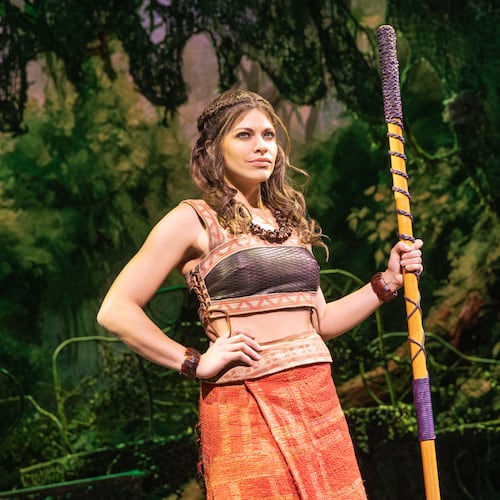After a long career in the contemporary art world, as the director of a New York gallery and then a professor at SCAD Atlanta, Decatur resident Rosemary Erpf, 75, has published her first book at an age when other retired professionals are eyeing beach time or finally putting a dent in that stack of novels.
In her engaging, approachable book “Painting in the 1980s: Reimagining the Medium” (Intellect Books, $39.50) which will be released Aug. 26, Erpf tackles a subject of longstanding personal interest forged during her time in New York.
Credit: Jenni Girtman
Credit: Jenni Girtman
As founding director of New York’s R. C. Erpf Gallery, which opened in 1985, and then as director of contemporary art pioneer Marian Goodman Gallery, Erpf was immersed in Manhattan’s contemporary art world and dealt with many “high maintenance” collectors and art dealers. But she also had the opportunity to work with an array of renowned artists that art world pioneer Goodman represented including Lawrence Weiner, John Baldessari, Arte Povera artist Giuseppe Penone and British sculptor Tony Cragg.
Relocating to Georgia in 2006 to teach at SCAD Atlanta came as a bit of a culture shock.
“When I arrived in Atlanta, everything appeared to be in slow-motion. Also, the fact that everything closed so early was a shock. Then, I discovered all the great places for breakfast and that helped me adjust.” Also an avid year-round tennis player, Erpf calls moving to Atlanta “the best decision I ever made.”
Credit: Courtesy of the artist
Credit: Courtesy of the artist
The period in 20th century art history that Erpf documents in “Painting in the 1980s” is of great consequence but imprecise characterization. She often taught the era during her 12 years at SCAD in a course called Painting, Punk and Photography: The Downtown New York Art World of the ‘80s. Her first book looks at the revival of painting in the ‘80s and the influence of artists including Julian Schnabel, Eric Fischl, David Salle, Marlene Dumas, George Condo and Jean-Michel Basquiat. Their work, says Erpf, signaled the return of painting after the dominance of minimalism and conceptual art in the previous decade.
“Major artists of the 1980s breathed life back into the practice of painting even though art experts had declared that painting was dead,” says Erpf.
After the economic downturn of the 1970s, New York City was a receptive place for artists from all over the country. “Location played an important role,” says Erpf in “Painting in the 1980s.”
“Cheap housing in lower Manhattan lured artists of many disciplines.”
Credit: Peter Cox, Eindhoven. Courtesy of Studio Dumas.
Credit: Peter Cox, Eindhoven. Courtesy of Studio Dumas.
Though some called these ‘80s artists Neo-Expressionists, Erpf argues that these particular artists were alike only in their unique approaches to painting.
“What I love about this period is the variety of expression,” she tells the AJC. “The fact that there is no singular style…is exciting.”
“The heart of the book is the artists’ creative journey; no two are the same,” she says. And so while Fischl often wove the influence of Modernist painting and his personal experiences growing up in suburbia into his ambiguous, story-driven paintings, Salle was deeply inspired by film and Lari Pittman brought identity politics and social critique to the fore in his work, along with a love of decoration and craft.
“When you think about painting with its rich history, the argument that there was nothing ‘new’ in painting made sense. But these artists found a way to make it new and original in terms of content, imagery, sources, process, and/or art historical references,” says Erpf.
Credit: Courtesy of the artist and Gladstone Gallery, New York and Brussels.
Credit: Courtesy of the artist and Gladstone Gallery, New York and Brussels.
In addition to this resurrection of painting by American artists, Erpf’s book looks at German and Italian painters like Francesco Clemente, Anselm Kiefer, George Baselitz, Sigmar Polke and Gerhard Richter who often contemplated nationhood and embodied regionalism in their paintings.
Notable art world figures including former Metropolitan Museum of Art curator Lowery Stokes Sims and Dan Camerson have praised Erpf’s book. And one of the superstars of Eighties painting Julian Schnabel offered his own blessing for the project after some initial resistance.
“He can appear to be full of himself, but it is just his passion for art,” says Erpf of their conversations surrounding her book. “But he is really kind, appreciative, and supportive of the creative process, be it painting, film or writing.”
About the Author
Keep Reading
The Latest
Featured





